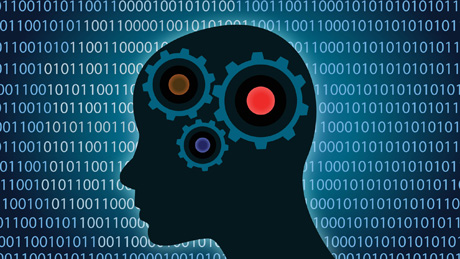Source – venturebeat.com
Data, artificial intelligence, machine learning (ML), and deep learning (DL): These make up the zeitgeist of our current times. We read these words constantly. We also hear they will leave no area or industry untouched. But what about the arts? How have they influenced or aided highly creative areas? Let’s take a look at some ways people have started to pair these technologies with art.
Art installations and performances
Astrocyte, Philip Beesley Architect Inc.
At Toronto’s 2017 Expo for Design, Innovation, and Technology (EDIT), architects suspended in the air a large, intricate glasswork, inspired by the shape of a nerve cell, in an old, abandoned soap factory. The exhibit was interactive. Participants could walk around and under the art piece, and it changed its light pattern and surround sound in response to participants’ movements, which were usually reverential. The exhibit used artificial intelligence to identify participants’ movements and respond. It used electronic actuators and sensors to respond to viewers’ movement.
+/- Human, Wayne McGregor and rAndom International
London also saw artificial intelligence play a part in a recent 2017 Roundhouse art exhibit. Several white plastic spheres floated freely and elegantly in the air — sometimes moving in a group, sometimes moving individually, but always mesmerizing their grounded visitors below. As people in the space moved or danced, the autonomous orbs dipped, hovered, and lifted intelligently in response, all the while instructed by complex algorithms and motion sensors. The art exhibit extended drone technology to awe and inspire all who visited.
Mai Hi Ten Yu, Kaiji Moriyama, and Yamaha Corporation
In Tokyo on November 22, 2017, Kaiji Moriyama, a world-famous dancer, played the piano without placing a single finger on its ivories. He mesmerized the audience as he danced around the stage with sensors attached to his back, and it was through these sensors that he was able to manipulate the instrument’s sounds with his body movements. As he danced, the Berlin Philharmonic Orchestra Scharoun Ensemble accompanied him. It’s interesting to consider how this could lead to future fusions of playing music with body movement. Yamaha sees this fusion of body movement and music helping move new art forms forward.
Paintings and drawings
Live performances and one-time art installations are fascinating, but what about artificial intelligence and machine learning with longer-term art? Here are a couple examples for you in the painting and drawing realm.
Google Arts & Culture App
Perhaps two of the most popular recent applications of artificial intelligence and machine learning in arts in the United States are (1) an application that takes your carefully selected selfie and sifts through hundreds of fine-art pieces to match it to your museum-owned lookalike, and (2) an application that shows you all the fine-art pieces based on a specific color palette, which can be amazing for giving ideas for decorating your house. For the fine-art selfie, not only is it fun to see your selfie side-by-side with a recognized art piece, it’s a helpful way for museums to encourage appreciation for the arts in its visitors. By personalizing an art piece for you, this app works to foster in you the insatiable desire to know more about the subject of the painting, who painted the piece and when, and other contextual details.
Microsoft’s AI bot
For people who appreciate art better than they can create it, there’s a bot that may be able to take the stress off the creation process. Microsoft created an artificial intelligence that draws from a written description of a picture. Do you need a picture of a lemur jumping through the forest for your project? Capture that idea in written text and feed the words to this bot. It’ll draw what you’ve described with impressive artistry. It could be especially helpful for people who need pictures for a low-budget initiative and can’t afford to purchase art for it.
Photography
There have also been several examples of AI in photography. Adobe even recently started using it more, including in its Sensei platform, intended to better cut subjects in photographs out from their backgrounds. But let’s look at more specific examples.
Prisma.AI
For people who can’t get enough of Van Gogh or Picasso or certain popular patterns, there’s a way to transform their world with these signature looks. The Prisma app uses artificial intelligence to take a photograph and translate it into one that looks just like a certain artist painted it. It creates some beautiful and interesting new visual displays that are worthy of hanging on a wall. It’s an interesting new way to see and interact with the world, one that can turn the everyday and mundane into interesting vistas of creation.
Arsenal
One photography tool that will be released soon is Arsenal, a deep-learning photography assistant that will likely revolutionize advanced picture taking, at least for newbies. It easily chooses control settings, like shutter speed, aperture, and ISO, for a professional camera. The preliminary results look impressive, and this assistant will save photographers lots of time.
Applying these technological advances to art has and will continue to hatch interesting bursts of artistic creativity. Hopefully, this short list has given you a taste of some diverse and niche use cases in the space.
